Valley Ballroom
Chaska
The Valley Auditorium, later Valley Ballroom, was located in Chaska, just south of the Minnesota River, south of the Highway 41 bridge on the east side of the road. It was on the Scott County side of the River.
Much of the information for this page comes from an article in the book, Chaska: A Minnesota River City, Prehistory-1950, so kindly provided to me by the president of the Chaska Historical Society. That information will be annotated CHS.
VALLEY AUDITORIUM
Reviving memories of a previous Stege’s Park, a new Sugar City Park was dedicated on August 20, 1933, directly across the Minnesota River from Chaska. Ceremonies were to feature sports, a doll buggy parade for the girls, a dog parade for the boys, and dancing. The guest speaker for the proceedings was Roy J. Dunlap of the St. Paul Dispatch/Pioneer Press. (CHS) Grandstands for the baseball diamond were taken from the old ballgrounds bordering “the highway to Minneapolis” (Highway 41?) and moved to the new site by a group of citizens.
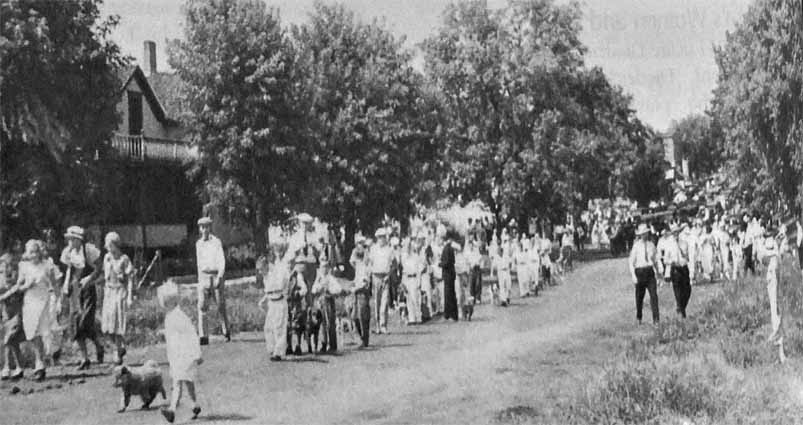
A dance pavillion, Valley Auditorium, was operated in the park by C.A. (Luby) and his brother Ray Lubansky, who led the movement for a park at Chaska. (Minneapolis Star, August 12, 1933)
Casimir Lubansky worked for the highway department after high school, and in 1933, he and his brother sunk their savings, a loan from their mother, and mortgaged everything they could to build the ballroom along the Minnesota River flats. Some of the workmen had to wait to get paid until after the ballroom opened, Lubansky remembered. (CHS)
The first dance brought in $1,500, according to Lubansky. Entertainment was provided by Wesley Barlow’s orchestra. Note that the ad below calls it the Valley Auditorium and Night Club! (CHS)
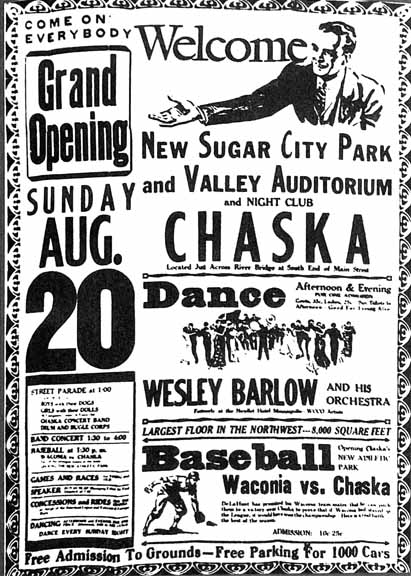
MUSIC AT THE VALLEY
Being outside of the Twin Cities, there don’t seem to be any ads in the Minneapolis papers in the early days of the Auditorium. There was one in the Minnetonka Record for a dance on September 17, 1933, featuring popular bandleader “Lou Breese and His 11-Piece Renowned Minnesota Orchestra,” and there may be many more like that. “The management has gone to extra expense to secure this attraction for its first appearance outside the Twin Cities. But admission remains at 35c FOR GENTS, 25c FOR LADIES. Night Club Open Always – Orchestra Music Wed. – Sat.”
Here is a rare ad from the Minneapolis press, no doubt published because of the star power of the orchestra leader, Lawrence Welk:
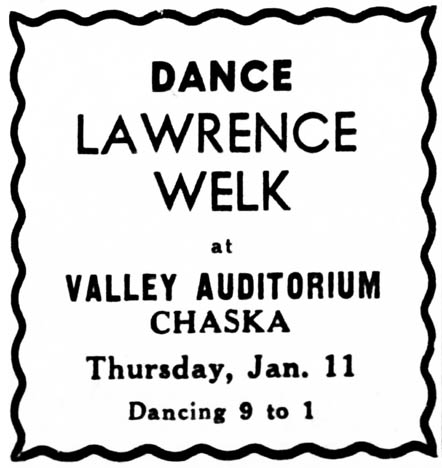
Welk made five appearances to the Valley Ballroom during his early career. (CHS)
The list of orchestras that came through the Valley Auditorium over the years is a long one, and the same musicians played all over the Five State area. Here’s just a sampling of those long-ago music makers:
- The Merry-Makers
- “Turk” Ramsey’s Pepper Shakers
- Jerry’s Bohemians
- Guy DeLeo
- Cecil Golly
- Whoopee John and His Six Fat Dutchmen
- Fezz Fritche
- Wally Pikal
- Ivan Kahle
- Ray Alderson
- Don Colburn
- Lee Williams
- Vern Wellington
- Dick Finch
- Bennet Greten
- Henry Charles
- Lynn Kerns
- Cliff Kyes
- Ray Winkler
- Clem Brau
- Joe Brabec
- Dick Kast
- Earl Huges
Some notable events were: (CHS)
The Battle of Music, between Bobby Griggs and his Waltz Kings and Tiny Little and the Texas Toe Teasers.
Lou Drews, who played his first dance job at the Valley, He went on to spend 20 years as the dance band at Chicago’s Chez-Paris.
One interesting note was that in the late 1930s, the jitterbug had taken the country by storm – a more athletic and enthusiastic version of the Lindy. Acceding to numerous complaints about the lack of decorum of these rowdy dancers, the Valley banned the jitterbug in 1939. (CHS)
VICE AT THE VALLEY
During the 1930s and ’40s, there was a Minneapolis vice crusader named Rev. Henry J. Soltau who made it his business to swear out warrants demanding raids on bars and night clubs that he suspected had gambling devices or illegal liquor. In 1940 he branched into Scott County. Whether as a matter of principle or in a feud with a competitor, Adam J. Happ of the Happ Ballroom in Shakopee swore out a complaint against the Valley Auditorium, charging Raymond and Casmir Lubansky with keeping gambling devices on the premises. Five slot machines were found in a raid at the Valley on September 24, 1940.
Soltau eventually went too far, securing 78 warrants for raids on Scott County night clubs and taverns (were there that many?) that were carried out on October 5, 1940. Not one gambling device or drop of illegal liquor was found, and on October 6, a judge filed a warrant against Soltau, charging him with “noise, riot, and disturbance,” after earlier refusing to sign 150 more warrants Soltau presented against Scott County establishments for gambling and liquor violations. (Minneapolis Star, October 6, 1940)
Another version of this story is that slot machines were legal in Scott County for a time, and each of the Scott County bars had 10 to 12 machines. The Valley had 12. It wasn’t until Luther W. Youngdahl became Governor of Minnesota in 1947 that slot machines were cleared out for good. (CHS)
VALLEY BALLROOM
The building seems to have been referred to as the Valley Auditorium in newspaper stories until October 1942, but ads for the Valley Ballroom started to appear in the Minneapolis papers in July 1941. (It may have also been known as the Sugar City Ballroom for a short time – CHS) Most of these ads were small and looked pretty much like the one below.
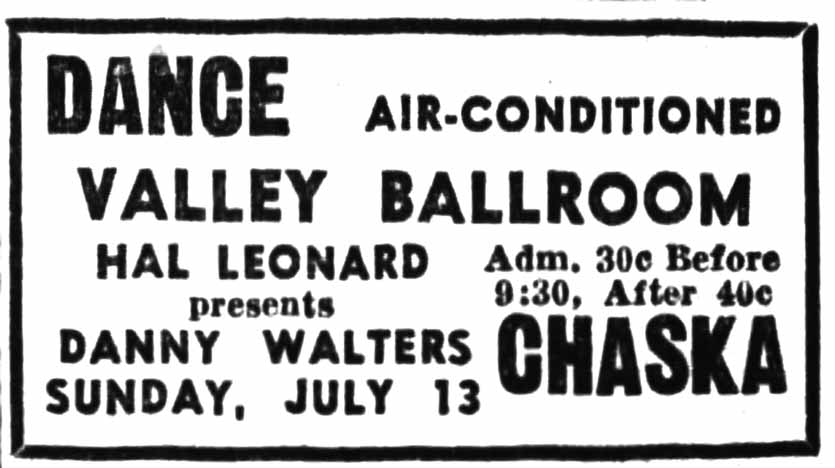
The dance advertised below must celebrate the 90th Anniversary of the founding of Chaska, the “Sugar City.”
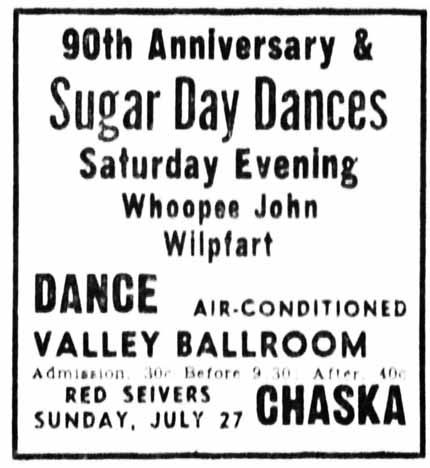
In September 1942, a report of a robbery named the proprietor as James Lubansky. His name shows up again in September 1972 as the proprietor of a Gulf service station at Highway 494 at the 24th Ave. exit, until May 1974.
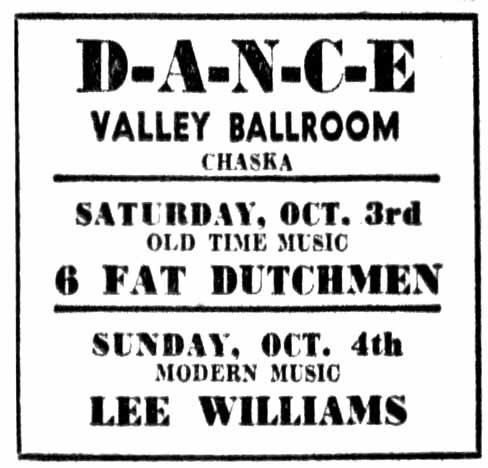
The rest of the ads all look the same except for the names of the bands, so I won’t post them here.
FLOODING
Being so close to the Minnesota River caused real problems for the Valley Ballroom. In 1938 there was a danger of high water and all the fixtures were moved to the second floor, but the waters receded. In 1951 and 1952, they weren’t so lucky. Below is a photo from the 1951 flood.
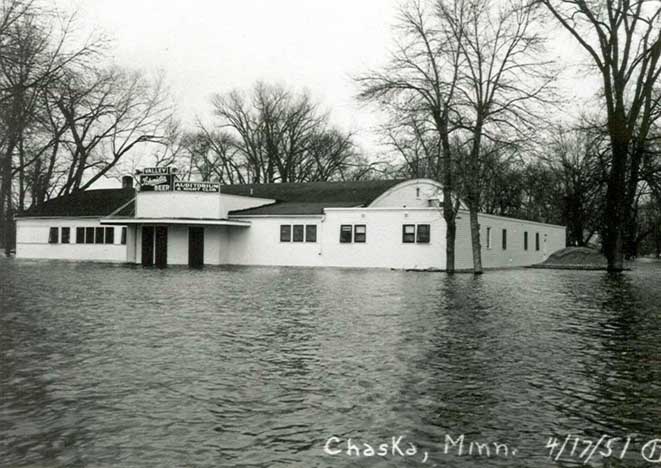
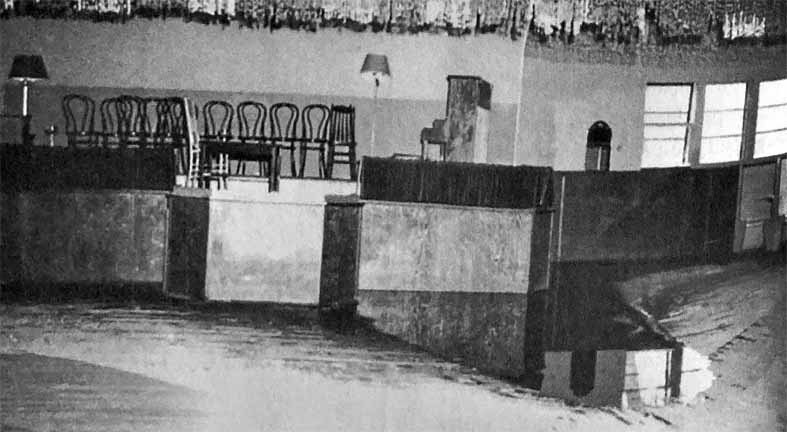
In 1952, George Grim titled his April 29 column, “Chaska Reels Under 2 Floods in 2 Years.” That year’s flood affected 600 of the town’s 2,000 people when the water rose eight feet over flood stage. He reported that the water buckled the dance floor of the Valley Ballroom down at the end of the street by the bend of the river. (Minneapolis Star)
The photo below shows Lawrence Welk, with owner Casmir “Luby” Lubansky, taken at the Welk’s TV studio, date unknown but probably in the 1950s.
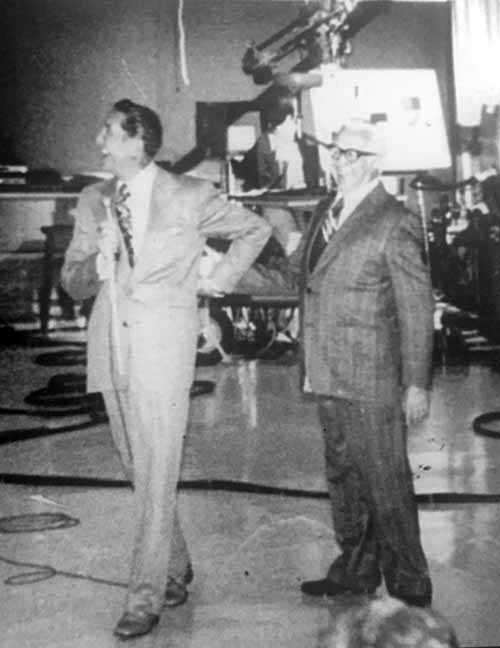
The photos below, of unknown source, show a truncated ballroom with one end removed.
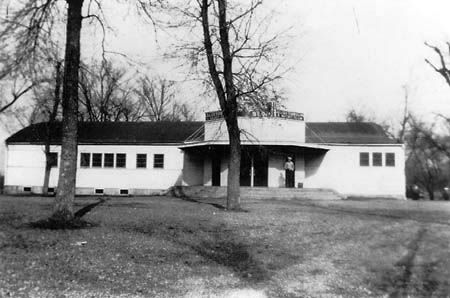
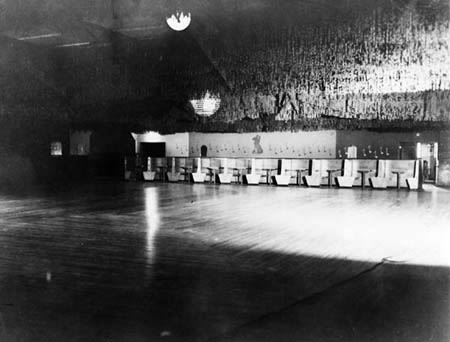
END OF THE VALLEY
The beginning of the end came in the early 1950s when the ballpark in Sugar Park was lost because of a re-routing of Highway 41. (CHS)
The Chaska History Center provides this piece of news from a local paper:
July 9, 1959: A twenty-five year era as one of the state’s most popular dance spots is fast drawing to a close for the Valley Ballroom at Chaska. The Valley, a byword in dancing since its inception on August 20, 1933, is holding its final dances this month before a highway bridge project necessitates removal of the building. Owners Hildred and Casimer “Luby” Lubansky have scheduled three final dances.
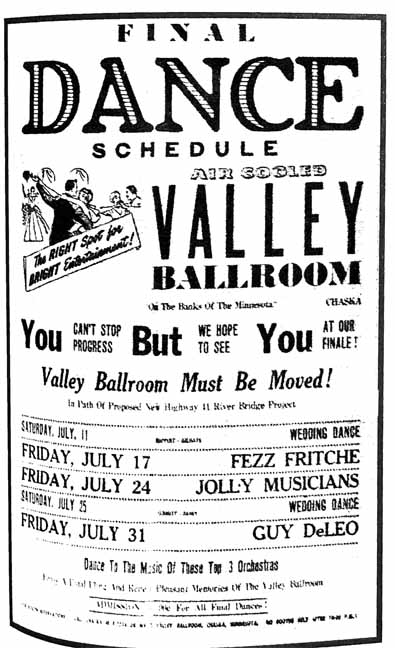
The last dance was held on Friday, July 31, 1959, with Guy De Leo providing the music. Another news item provided by CHS says that the Lubanskys were selling the Valley to the State of Minnesota as a part of a highway-bridge project.
CODA
One informant on Facebook noted that the building was moved after the 1965 flood to LeSeuer, Minnesota, where it was used for a roller rink. It may still exist as a dilapidated warehouse.


